Introduction to top 10 vegetables to grow in pots: Growing plants in pots or containers rather than in the ground is container gardening. A pot is an ideal option for urban areas without garden space. Because it is mobile and space-efficient, it can fit wherever you decide to build your garden.
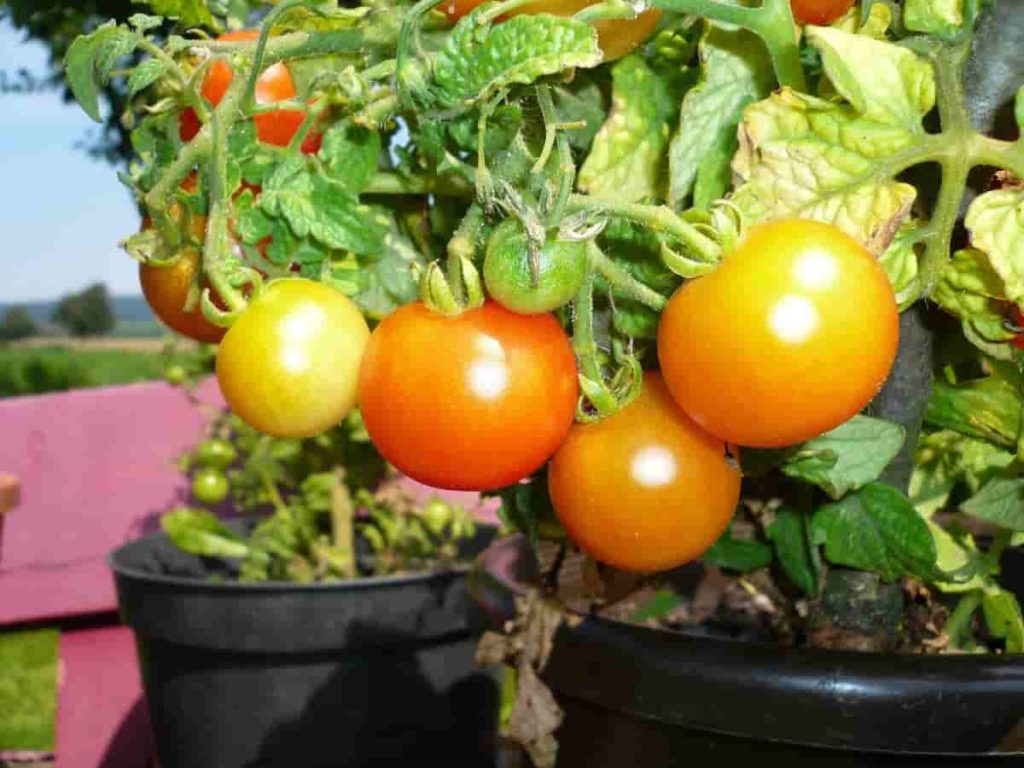
In addition, you can grow fresh, nutritious, homegrown vegetables in containers if you are limited by space or an unsuitable area for vegetable gardening. Window sills, patios, balconies, and doorsteps are all perfect places for a mini garden.
Guide on top 10 vegetables to grow in pots, how to grow vegetables in pots, top vegetables to grow in pots, tips for growing vegetables in pots
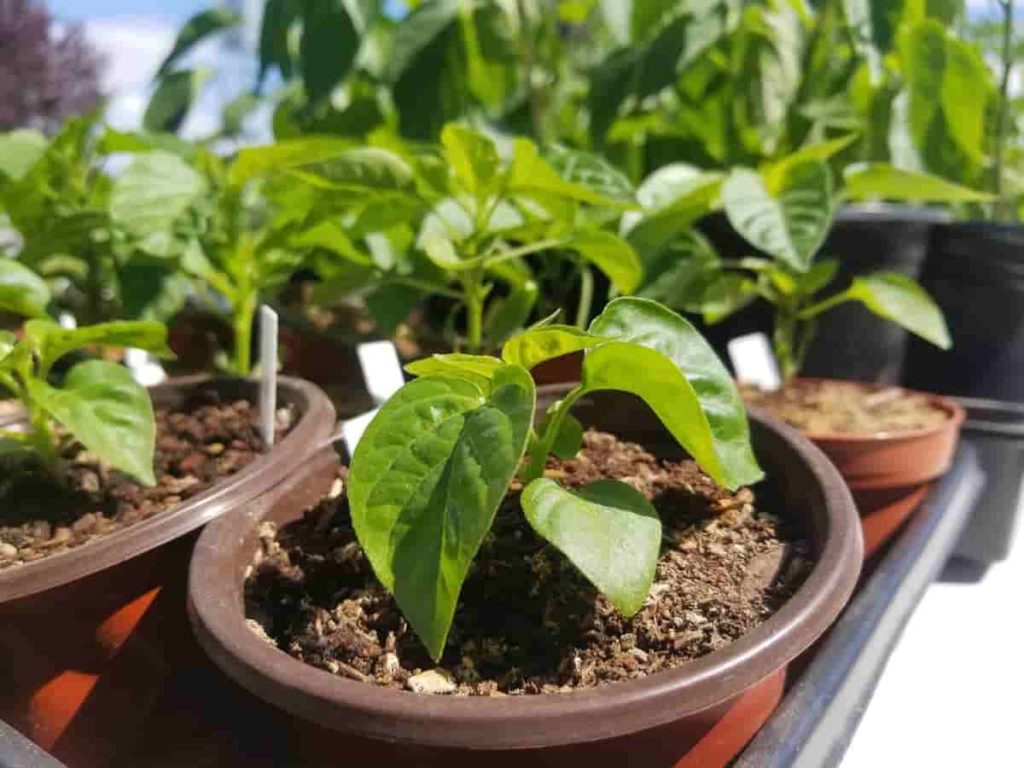
How to plant vegetables in pots
Consider what you like to eat as a starting point when choosing the plants for your container garden. It’s also wise to double-check that their needs are similar (full sun and well-drained soil), especially if you’re planting multiple vegetables in one pot. You can start your container vegetable garden when you plant in the garden. If you want to grow specific vegetables, you can either start seeds in your containers, grow transplants from seeds started indoors, or purchase transplants from a garden center. From seeds sown directly in a pot, grow radishes, beans, carrots, corn, and spinach.
How to grow vegetables in pots
Location
It is essential to site your containers to receive at least 6 hours of direct sunlight every day. A south or west-facing location is ideal. For easy access to your plants, place them as close to your house as possible. For your pots, choose a sheltered area to keep your plants out of the cold, drying winds. Place the pots near walls, fences, or hedges to reduce wind effects, or screen them. Getting started on your balcony or window ledge is a great way. If you don’t have a garden, make sure your pots are adequately secured so they won’t blow away.
Watering
Since the plants will not access moisture below ground, watering is a priority for pots. However, a hot sunny day can dry them out within hours, and plants might not recover from wilting so quickly—site pots as close to a water source as possible to make this task easier. If the weather is hot, water plants thoroughly in the early morning or evening, ensuring that the water gets down to the roots and not just the surface. Installing drip irrigation can be convenient, especially if you plan to be away during part of the summer.
Choosing the best pots
There are many types, sizes, colors, and materials of pots. You can get creative with recycled pots, but make sure they are clean and won’t leach harmful chemicals. Additionally, make sure your pot is large and heavy enough to accommodate fully-grown plants. Drainage systems are essential for preventing waterlogging. Please make sure there are enough drainage holes and make sure they are not clogged.
Finally, use potting soil or compost you have made at home to fill the pot. Do not use soil from your garden as it may be heavy and contain weeds or other soil-borne pests. It would help if you used a lightweight and moisture-retentive mix for pots, and you will need to top up the soil every season to replenish nutrients.
Top vegetables to grow in pots
Tomatoes
Tomatoes are the most productive vegetables you can grow in pots, without a doubt. Tomatoes need a lot of sunlight (at least 5 to 6 hours). Various types of tomatoes require different pot sizes. It would help if you grew dwarf types of determinate tomato plants in containers. If you also grow cherry tomatoes, you might get a higher yield.
Peppers
Peppers can also be grown in pots. Peppers grown in containers are productive, and they reduce cross-pollination between varieties. Sweet and hot peppers can be grown in containers, and they do well in grow boxes. You can also grow some colorful peppers in your garden that look beautiful. A pot needs to be at least 12 inches deep for optimal growth.
In case if you miss this: Top 20 Vegetables to Grow Indoors
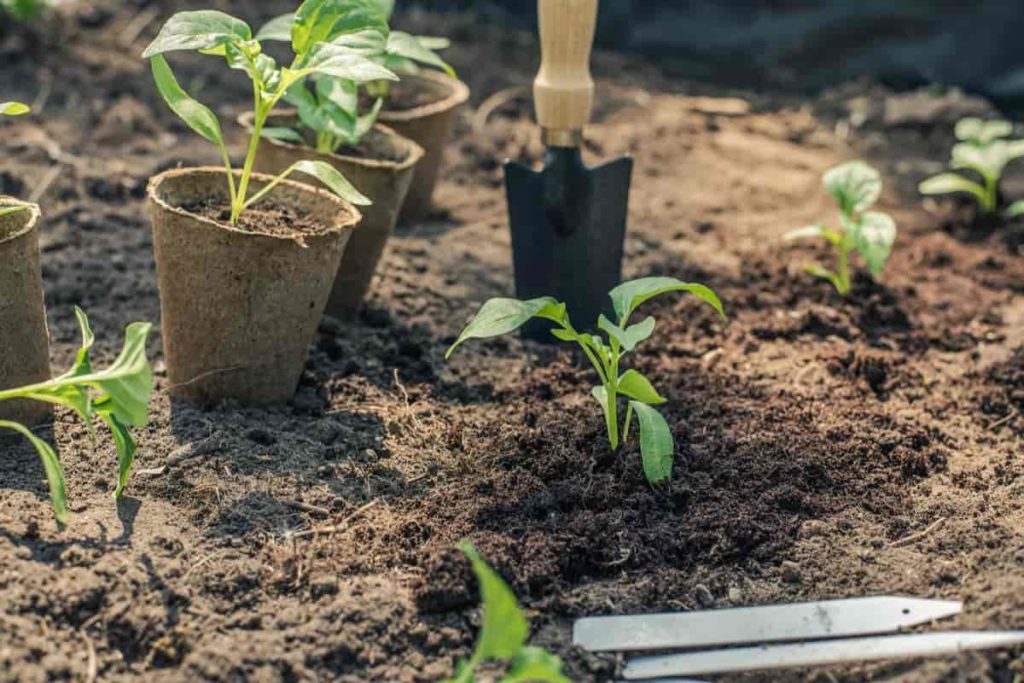
Ideally, the plants should receive at least 8 hours of direct sunlight a day, but ideally, they should receive 6-8 hours. In the containers, peppers need adequate drainage, and they need to be watered consistently. However, the soil should not be too wet because peppers do not like standing water. For peppers grown in containers, you may want to move the pots during stormy weather instead of letting the soil get too wet.
Beans
You can grow beans on your balcony as a great addition to your vegetable garden. Alternatively, the climbing variety requires a trellis to support itself in a pot. Plants that grow upward trend to be climbers or bushier types. Potted plants can be very productive. They can be grown on a trellis near a wall, and within weeks, the trellis is covered in green beans.
You will need a sunny spot, a pot at least 12 inches deep (the more significant the pot, the better), and a support structure such as a trellis. The nitrogen fixation of beans makes them suitable for growing vegetables requiring higher nitrogen levels under them. Add summer savory, kale, or celery when growing beans in a large pot.
Radishes
Radishes are one of the fastest-growing vegetables, and they can also be grown in small and wide pots. A planter that is 6 inches deep is sufficient, but if you want to grow larger varieties, you need an 8-10-inch pot. You should leave three inches between each plant.
Potatoes
Potatoes grown in pots taste better than those found in supermarkets and are organic. Ensure the pot receives at least six and eight hours of sunlight a day to grow them well. Growing potatoes in pots is an easy way to grow them. As the plants grow, you will need to mound more dirt over them, so containers make the process easier. To grow potatoes in pots requires a lot of soil and water, but the reward is delicious fresh potatoes.
Beets
Root crops may seem odd to be included on this list, but they do exceptionally well in pots because you can keep the soil fluffy rather than compacted. Because they can be grown in small spaces, beets are perfect for container gardening. It would help if you chose a 12-18 inches deep pot.
For them to grow and develop freely, the depth of your container is the most critical consideration. The ideal depth for good root growth is 12 inches. Make sure your containers receive six hours of sunlight per day. Maintain a pH level of 6.0 to 7.5 in your soil. Adding wood ash to your soil will increase its acidity.
Swiss Chard
You could ask any container gardener why greens are such a great choice. One underrated plant is Swiss chard. It is sad because they come in different colors. If you want a colorful garden, you should include as much chard as possible. A container at least 8 inches deep would be ideal; several chard plantings are best kept together in a long pot. You can then use some of the leaves for the salad. It is an excellent variety to plant rainbow chard. It comes with pink, white, and red stalks. It is ready for harvest in 50-60 days.
In case if you miss this: Top 50 Vegetables To Grow In The Backyard
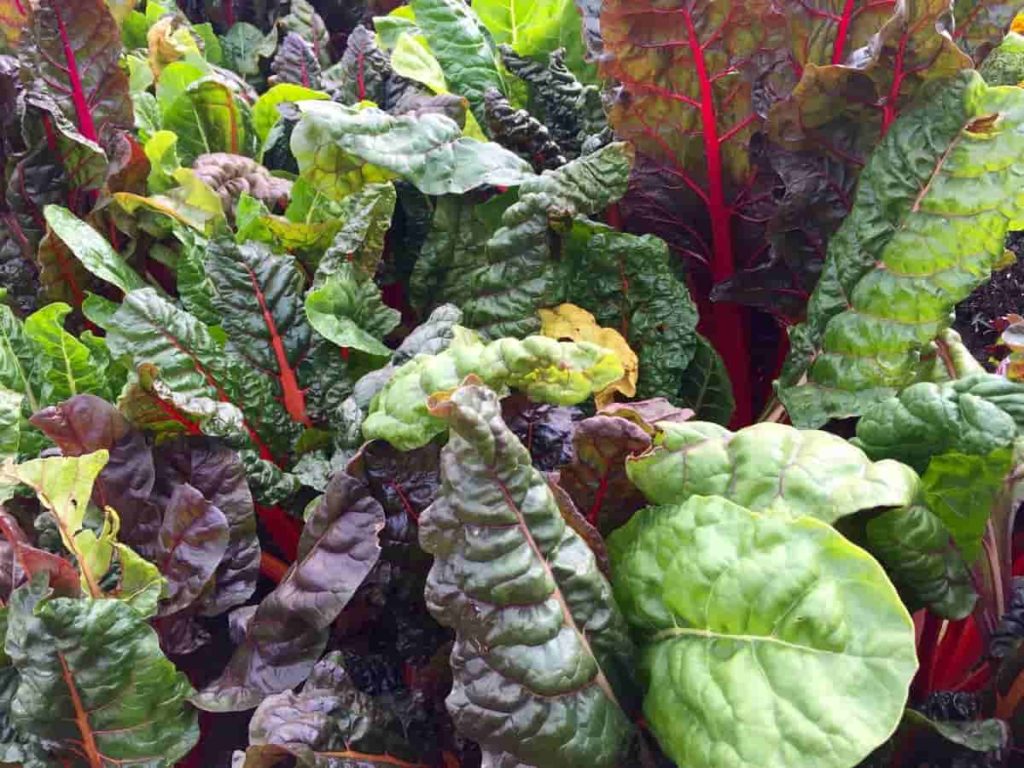
Peas
Although peas grow up a trellis or support system, you can grow them in pots. Planting peas in pots isn’t a big deal if you pick dwarf or bushy varieties. In addition, kids love growing peas, so you might be surprised to find out how much they enjoy fresh peas. Peas are a cool-season crop and should be planted during the spring when it is not too hot or cold. It’s more important to have a whole pot than a deep one; a large pot isn’t necessary. A 6-8-inch-wide pot will do.
Lettuce
Lettuce grows fast, and you can harvest it multiple times throughout the growing season. The best time to grow lettuce depends on your climate, as lettuce is an excellent season crop. In general, lettuce seeds are planted in the spring. If you live in a warm climate, you should grow lettuce in winter.
In case if you miss this: Top 20 Quick Growing Herbs In Pots/Containers
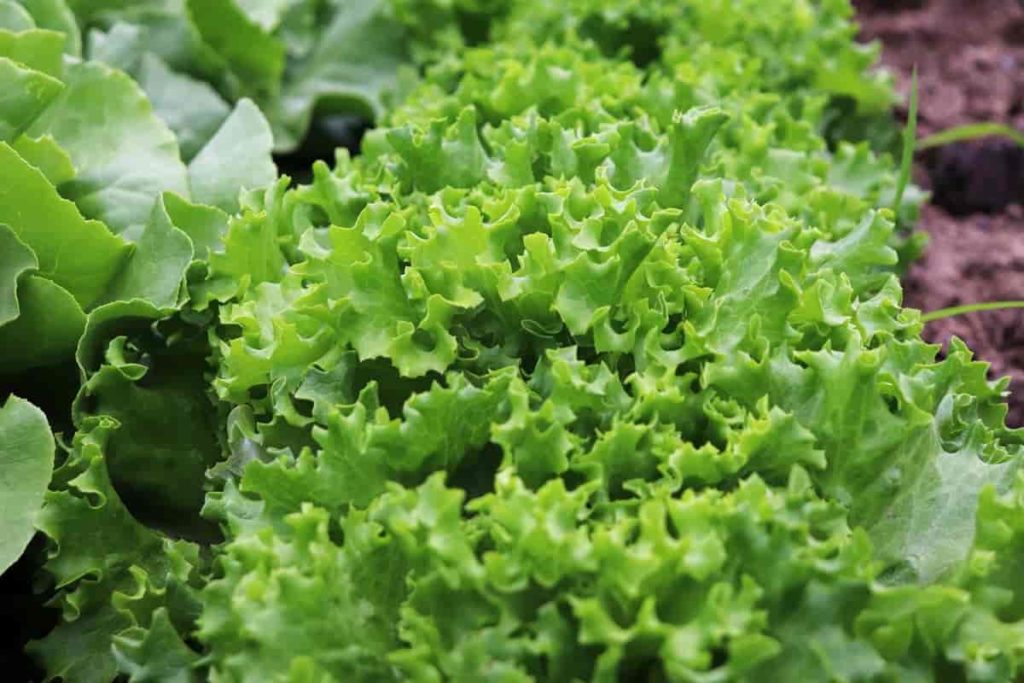
It is better to choose a wide planter rather than a deep one (six inches deep should be fine). Make sure to leave a space of at least four inches between each plant when planting. Head lettuce can be grown closer together than leaf lettuce. Maintain slightly moist soil by using well-draining soil and watering it frequently and shallowly.
Cucumber
Large pots of full-sun cucumbers thrive well as water-loving plants. As a result, the soil must be fertilized and watered regularly. It is also possible to grow them vertically.
Caring for vegetables in pots
A vegetable container garden needs to be watered regularly. First, ensure the potting mix is not dried out when you plant your vegetables. Next, make sure the soil is not dry by sticking your finger into it; if it is, it is time to water to avoid wilting the plants. Install a drip irrigation system for your vegetable container garden to make watering easier. You can automatically irrigate your vegetables with it. Vegetable gardens can be kept productive by keeping an eye out for weeds and other pests. Even though plants in containers are less likely to get the disease than those grown in the ground, you’ll still want to watch for problems. You can remove the plants or treat them if they show signs of disease.
Tips for growing vegetables in pots
- Consider what you’re growing when choosing a size. Some plants can be put in a large pot together, but tomatoes require a deep pot – at least knee-high and as wide – on their own. In this case, you will have to find some new dwarf varieties, like the ones produced by the Dwarf Tomato, to plant as companion plants.
- A small “micro dwarf” plant grows in pots with many other plants and produces dozens of tasty green-and-orange-striped tomatoes.
- Large plants need plenty of space, and most roots grow better when they have room to spread. Keep small pots away from hot days since they will not hold enough water. Moreover, bigger pots allow you to grow more plants.
- Use barrels (half barrels are great for storing food), baskets, boxes, buckets, tubs, and troughs for soil storage. Make sure each one has a drainage hole at the bottom.
In case if you miss this: Top 30 Quick Growing Fruits In Containers/Pots
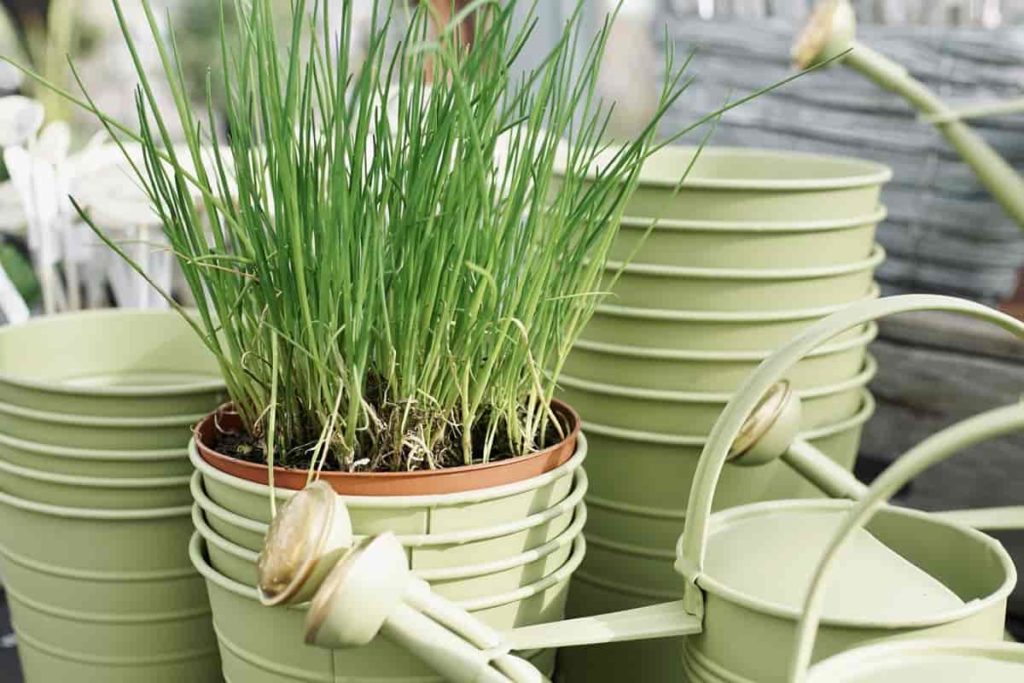
- Terra-cotta pots usually look better than plastic ones, but plastic ones retain moisture better and will not go wrong as fast as unglazed terra-cotta ones. You can slip a plastic pot into a slightly larger clay pot to get the best of both worlds. When black pots are placed in the sun, they absorb heat.
- Many plants grown in pots need watering as often as twice a day. Place a small pot inside a large one and fill the space between the two with sphagnum moss or crumpled newspaper during hot summer days to keep plants cool and moist. Water the plant and the filler between the pots at the same time.
- Growing herbs, cherry tomatoes, and strawberries at eye level are done efficiently and quickly with hanging baskets.
- Add about one inch of coarse gravel to the bottom of pots to improve drainage.
- It is best to grow vegetables in containers to be easily transplanted. You can either purchase transplants from local nurseries or start them yourself.
- Follow the label instructions when applying liquid fertilizer to container plants. Applying fish emulsion or compost to container soil from time to time will supply trace elements.
- Place containers in areas that receive maximum sunlight and good ventilation. Make sure pests are controlled.
Commonly asked questions about vegetables to grow in pots
Is it possible to plant vegetables in pots?
Almost all vegetables can be grown in pots, except melons and pumpkins, which are more extensive and sprawling. Plants that grow well in pots are potatoes, eggplants, green beans, tomatoes, cucumbers, okra, and peppers, except for bell peppers.
Can I plant vegetables in pots now?
The following vegetables thrive in containers: Broad beans, Beetroot, Dwarf French beans, Peas, Carrots, Potatoes, Radishes, Runner beans, Herbs, Salad leaves, Salad onions, Rocket, Salad turnips, Chillies & Peppers, and Tomatoes.
What size pot should I use to grow vegetables?
Pots between 6 and 10 inches are adequate for green onions, parsley, and herbs. However, most vegetable crops, such as peppers, tomatoes, and eggplant, require containers of at least 5 gallons, whereas chard and dwarf tomatoes can be grown in containers of up to 2 gallons.
What are the best ways to grow vegetables in pots?
It’s all about location, location, location. The plants in your containers should receive at least 6 hours of direct sunlight each day since most vegetable plants prefer plenty of sun. You will benefit most from the southern or western exposure. It would help if you placed them close to your house for easy access to your plants.
How safe are our plastic pots for growing vegetables?
Using plastic pots to grow fresh veggies at home is a practical, affordable solution when you don’t have access to an in-ground garden. Food can also be grown safely in plastic pots.
- How to Grow Tomatoes Organically at Home: A Comprehensive Guide
- Organic Gardening on a Budget: Low-Cost Methods and Materials
- Gongura Seed Germination and Planting Methods
- Cabbage Seed Germination and Selection
- Broccoli Seed Germination and Selection
- Asparagus Seed Germination and Variety Selection
- Seasonal Flower Gardening: Best Practices for Spring, Summer, Fall, and Winter
- How to Grow Hibiscus from Flower
- Plantation Ideas for Home Decoration: A Beginners Guide
- Flower Garden Designs and Layouts for Beginners
- Planting and Spacing Techniques in Papaya: A Beginner’s Guide
- Growing Gold: Essential Techniques for Planting Pineapples
- How to Make Kalanchoe Plant Bushy: Home Remedies and Solutions
- 11 Reasons Why Your Gardenia is Not Blooming: Home Remedies and Solutions
- Eco Elegance: The Guide to Designing a Drought-Tolerant Landscape
- Gardening on a Slope: Strategies for Hillside Landscaping
- Nourish and Flourish: Top Organic Mulches for Thriving House Plants
- Everything You Want to Know about Indian Mogra Flower: Discover Uses and Growing
- Green Thumb Success: Expert Tips for Cultivating Greenhouse Pumpkins All Year Round
- Maximize Growth & Flavor: The Ultimate Guide to Companion Planting in Herb Gardens
- How to Control Rhododendron Problems Naturally: Home Remedies and Organic Ways to Fix Them
- Natural Magic: The Remarkable Benefits of Cinnamon for Plants
- Best Steps to Revive Dying Tulip with Natural and Organic Treatment
- 10 Reasons Why Your Angel Trumpet is Not Blooming: Remedies and Treatment
- How to Fix Periwinkle Leaf and Flower-Related Problems: Natural Remedies and Solutions
- How to Fix Zinnias Leaf and Flower Problems: Discover Natural and Home Remedies
- Organic Steps to Induce Lemon Tree Flowers: A Comprehensive Guide
- Bloom Booster: Crafting the Perfect Homemade Bougainvillea Fertilizer
- Optimizing Growth: A Guide to Applying NPK Fertilizer for Potted Plants
- 10 Best Homemade Fertilizers for Rubber Plant: DIY Recipes and Application Method
- How to Boost Female Pumpkin Flowers: Effective Steps for More Flowers and High Yields
- Transform Your Indoor Garden: Top Benefits of Pink Salt for Houseplants
- 10 Best Homemade Fertilizers for Peacock Plants (Calathea): Easy DIY Guide
- Unlock Blooms: 9 Reasons Why Your Potted Chrysanthemum is Not Blooming
- 8 Reasons Why Your Potted Hibiscus is Not Blooming: Fix it with Simple Solutions
- Unlock Blooms: 9 Key Reasons Your Potted Frangipani Won’t Flower